Surviving Teen Dating Violence

It's estimated that every 9 seconds, an American woman is assaulted by someone who once claimed to love her. Every day, at least four women die at the hands of their husbands or boyfriends. And studies say one in four women will be beaten or raped by somebody they know. In fact, domestic violence sends more women to emergency rooms every year than car accidents and muggings combined.
These are numbers security expert Gavin de Becker knows all too well. Still, he says there's one segment of the population severely underrepresented in the statistics—teenagers. "Teenage girls are the most victimized members of the population in America—not only the most victimized, but also the least likely to report," he says. "That combination is terrible because it means we can't even get our hands around the statistics of how many young girls are subject to date rape, to violence, to abuse of all kinds."
Take Gavin's assessment to help determine if your loved one is at risk.
Now a woman who survived the unthinkable is coming forward to help other teens in life-threatening relationships.
These are numbers security expert Gavin de Becker knows all too well. Still, he says there's one segment of the population severely underrepresented in the statistics—teenagers. "Teenage girls are the most victimized members of the population in America—not only the most victimized, but also the least likely to report," he says. "That combination is terrible because it means we can't even get our hands around the statistics of how many young girls are subject to date rape, to violence, to abuse of all kinds."
Take Gavin's assessment to help determine if your loved one is at risk.
Now a woman who survived the unthinkable is coming forward to help other teens in life-threatening relationships.
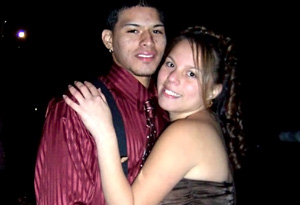
At 16, Johanna and her boyfriend Juan seemed like the perfect match. The pair met in second grade and began dating in high school. "He was not only my boyfriend, but he was my best friend," she says.
Johanna says she never imagined her relationship would turn into a living nightmare. Three months into dating, Johanna says, Juan's behavior changed drastically. "He was very jealous. I couldn't even talk to certain girlfriends. He was very jealous even when I was around my family," she says. "I couldn't wear certain things. I had to cover my body. He had made me change my schedule so we had at least two or three classes together."
Juan even took away the cell phone Johanna received from her grandmother. "Every night I would have to give it to him," she says. "He would take it home with him."
Johanna says she never imagined her relationship would turn into a living nightmare. Three months into dating, Johanna says, Juan's behavior changed drastically. "He was very jealous. I couldn't even talk to certain girlfriends. He was very jealous even when I was around my family," she says. "I couldn't wear certain things. I had to cover my body. He had made me change my schedule so we had at least two or three classes together."
Juan even took away the cell phone Johanna received from her grandmother. "Every night I would have to give it to him," she says. "He would take it home with him."

Quickly, Juan's jealousy turned to violence. "He would hit me and beat me 'til I couldn't breathe anymore," she says.
When friends saw him push her into a locker, Johanna tried to say they were just playing around. "It [was] the shame of admitting that he was hitting me," she says. "He was the guy I loved and the guy I did everything for and everybody knew I cared for."
After two years, Johanna decided she'd had enough. "When I said, 'I just don't want to be with you anymore,' I remember him hitting me," she says. "A straight punch in the stomach, and he was, like, 'You're not leaving.'"
Wanting to avoid a face-to-face confrontation, Johanna ended the relationship over the phone. He threatened to kill her, but she says she didn't take him seriously. "I didn't think he had it in him. So I just ignored it," she says. "I thought deep inside he still did love me even though he did beat me and even though he did insult me in so many ways and threatened me."
When friends saw him push her into a locker, Johanna tried to say they were just playing around. "It [was] the shame of admitting that he was hitting me," she says. "He was the guy I loved and the guy I did everything for and everybody knew I cared for."
After two years, Johanna decided she'd had enough. "When I said, 'I just don't want to be with you anymore,' I remember him hitting me," she says. "A straight punch in the stomach, and he was, like, 'You're not leaving.'"
Wanting to avoid a face-to-face confrontation, Johanna ended the relationship over the phone. He threatened to kill her, but she says she didn't take him seriously. "I didn't think he had it in him. So I just ignored it," she says. "I thought deep inside he still did love me even though he did beat me and even though he did insult me in so many ways and threatened me."
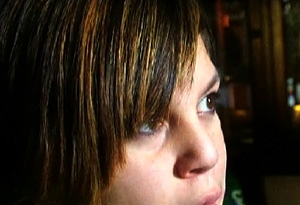
One week after their breakup, Johanna awoke to find Juan knocking on her window. "He said, 'We need to talk. We need to work things out. I love you,'" she says. "I just said, 'Juan, I'm sorry. I can't.' And I just closed the window."
Juan persisted. "He just kept pounding louder and louder and my brother's room was next door to mine and I didn't want him to wake up." Though her gut told her not to, Johanna let Juan in. That night, Juan raped Johanna.
By saying 'yes' and allowing Juan inside, Gavin says Johanna said 'no' to herself—a symptom of a dangerous cultural problem. When a woman says no, Gavin says, it's often perceived as the beginning of a negotiation. "Expressing things with certainty—in that way that men do—sounds more powerful," he says. "A lot of women in this culture talk with question marks at the end: 'Yeah, I want to?'...So there's a lack of certainty allowed in this culture."
Watch Gavin explain the power of "no"
Saying 'no'—and meaning it—can sometimes be a woman's most powerful weapon. "It takes women to own that 'no' and treat it powerfully," he says. "It's a very valuable resource, that 'no.'"
Juan persisted. "He just kept pounding louder and louder and my brother's room was next door to mine and I didn't want him to wake up." Though her gut told her not to, Johanna let Juan in. That night, Juan raped Johanna.
By saying 'yes' and allowing Juan inside, Gavin says Johanna said 'no' to herself—a symptom of a dangerous cultural problem. When a woman says no, Gavin says, it's often perceived as the beginning of a negotiation. "Expressing things with certainty—in that way that men do—sounds more powerful," he says. "A lot of women in this culture talk with question marks at the end: 'Yeah, I want to?'...So there's a lack of certainty allowed in this culture."
Watch Gavin explain the power of "no"
Saying 'no'—and meaning it—can sometimes be a woman's most powerful weapon. "It takes women to own that 'no' and treat it powerfully," he says. "It's a very valuable resource, that 'no.'"

Juan was sent to jail but released after only four days. "He was on house arrest, and I didn't know," she says. "Then I found out he was on work release and he kept stalking me and he called me numerous times. He was always around me."
Gavin says stalking situations like Johanna's happen every day. "She needed a lot of help at that time and didn't get it from law enforcement, from courts," he says. "So now he's out and he's on supposed house arrest, an ankle bracelet which, of course, is not arrest at all. That's looking for somebody's cooperation."
Gavin says stalking situations like Johanna's happen every day. "She needed a lot of help at that time and didn't get it from law enforcement, from courts," he says. "So now he's out and he's on supposed house arrest, an ankle bracelet which, of course, is not arrest at all. That's looking for somebody's cooperation."
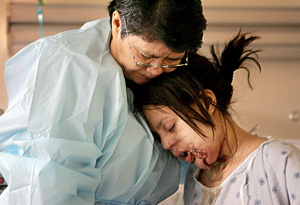
When leaving home one morning, Johanna says, she couldn't shake the feeling that someone was watching her. "When I got in the car, I just told myself, 'You're just panicking. You're just being anxious.'"
Then, Johanna saw Juan standing with a shotgun. "When we locked eyes, I had chills. Once he took that gun out, I mean, my heart dropped," she says. "I knew I was going to die. I just knew something bad was going to happen."
Juan shot Johanna in the face, leaving her to fight for her life in the driveway.Though she survived, her lower jaw was destroyed, and Johanna has had nine surgeries to repair her face. "They took a bone out of my leg and they made me a complete new jaw," she says.
Then, Johanna saw Juan standing with a shotgun. "When we locked eyes, I had chills. Once he took that gun out, I mean, my heart dropped," she says. "I knew I was going to die. I just knew something bad was going to happen."
Juan shot Johanna in the face, leaving her to fight for her life in the driveway.Though she survived, her lower jaw was destroyed, and Johanna has had nine surgeries to repair her face. "They took a bone out of my leg and they made me a complete new jaw," she says.
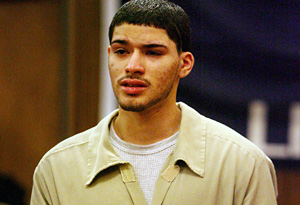
Juan was sentenced to 27 years in prison for rape and aggravated attempted murder. He is not eligible for parole.
Gavin has one important message for women who can't escape an abusive ex. "You cannot do it alone and don't have to," he says.
If you—or someone you know—need help, Gavin says to contact your local women's shelter or the National Domestic Abuse Hotline at The Hotline.org or 1-800-799-SAFE. "In America, there are hundreds of suicide prevention centers and there are thousands of suicide prevention hotlines. There isn't one homicide prevention center in America. And the closest we have to a homicide prevention center is a battered women's shelter because what they're dealing with is people who, if interventions are not applied wisely, are likely to be killed."
If you suspect someone in your life is capable of violence, Gavin has developed a potentially lifesaving tool called MOSAIC. Anyone—the victim or concerned loved ones—can log onto a website and answer 46 questions to help determine how much of a threat an abuser poses to an individual or family. "MOSAIC expresses its results on a scale of 1 to 10, with 10 being the most likely to escalate—including homicide," Gavin says.
This online assessment is free and anonymous. Take it now.
Gavin has one important message for women who can't escape an abusive ex. "You cannot do it alone and don't have to," he says.
If you—or someone you know—need help, Gavin says to contact your local women's shelter or the National Domestic Abuse Hotline at The Hotline.org or 1-800-799-SAFE. "In America, there are hundreds of suicide prevention centers and there are thousands of suicide prevention hotlines. There isn't one homicide prevention center in America. And the closest we have to a homicide prevention center is a battered women's shelter because what they're dealing with is people who, if interventions are not applied wisely, are likely to be killed."
If you suspect someone in your life is capable of violence, Gavin has developed a potentially lifesaving tool called MOSAIC. Anyone—the victim or concerned loved ones—can log onto a website and answer 46 questions to help determine how much of a threat an abuser poses to an individual or family. "MOSAIC expresses its results on a scale of 1 to 10, with 10 being the most likely to escalate—including homicide," Gavin says.
This online assessment is free and anonymous. Take it now.
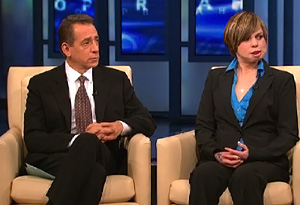
Gavin says Johanna's experience will help save lives. "Johanna actually did so much better than so many other people. She did tell this violent and threatening person that she was done with the relationship, and she meant it. She didn't negotiate. She didn't get pulled into a lot of conversations about it," he says. "She also did go to the police...She had the courage to do that. The system let her down by all measures, but she did all the right moves for a young person."
The only thing Gavin says Johanna could have done differently was to seek help earlier. "One thing that made her situation so particularly difficult is she did not talk about it with anybody," he says.
Still, Johanna's alive to tell her story. "Anybody out there who thinks they're in a relationship that's too tough to get out of, you only have to look at Joanna and see what she went through. And she ultimately got out of her relationship," he says. "If Johanna has the strength to do it, then anybody out there has the strength to do it."
How do you stop the abuse cycle? Watch Gavin's after the show Q&A
Take the test that could save your life
A mother's fight for life
Four relationship red flags
The only thing Gavin says Johanna could have done differently was to seek help earlier. "One thing that made her situation so particularly difficult is she did not talk about it with anybody," he says.
Still, Johanna's alive to tell her story. "Anybody out there who thinks they're in a relationship that's too tough to get out of, you only have to look at Joanna and see what she went through. And she ultimately got out of her relationship," he says. "If Johanna has the strength to do it, then anybody out there has the strength to do it."
How do you stop the abuse cycle? Watch Gavin's after the show Q&A
Take the test that could save your life
A mother's fight for life
Four relationship red flags



